History & Discovery: Indus Valley Civilization | History for UPSC CSE PDF Download
Did you know, “Dentistry was a profession practiced during the time of Indus Valley Civilization”? The world of archaeology got surprised when in 2006, the British scientific journal “Nature”, wrote that the first evidence of drilling of human teeth was found at the excavation in Mehrgarh, Pakistan (Indus Valley Civilization) dating back around 7000 BC.
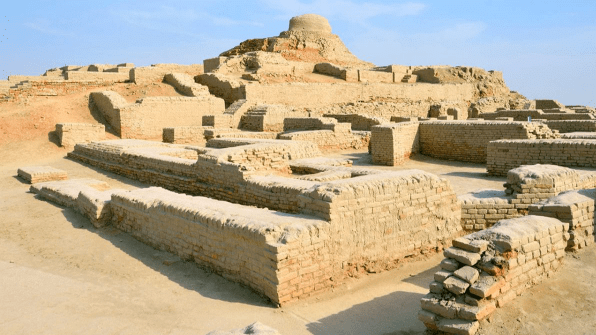 Excavated ruins of Indus Valley
Excavated ruins of Indus Valley
Indus Valley Civilization (IVC) is filled with interesting facts & stories and lays the foundation of Ancient Indian history. It is one of the oldest known Civilizations, contemporary with Egyptian & Mesopotamian civilizations.
The Indus Valley Civilization was an ancient civilization located in what is Pakistan and northwest India today, on the fertile flood plain of the Indus River and its vicinity. Settlements began between 4000 BCE and 3000 BCE becoming the first signs of urbanization. By 2600 BCE, dozens of towns and cities had been established, and between 2500 and 2000 BCE the Indus Valley Civilization was at its peak. The ruins of Mohenjo-Daro were designated a UNESCO World Heritage site in 1980.
 Geographical Extent of IVC
Geographical Extent of IVC
History and Sources of History
History is the academic discipline that deals with the study of the past. It is derived from the Greek word “historia”, meaning the knowledge acquired through investigation. History includes the academic discipline that uses a narrative to describe, examine, question, and analyze a sequence of past events, and investigate the patterns of cause and effect that are related to them. Prehistory is another category within History that deals with the past events prior to the invention of writing systems. The historical method comprises the techniques and guidelines by which historians use primary sources and other evidence to research and then to write history. History is a discipline, which is the study of past through various sources such as records, archaeology, and texts, etc., The sources can be divided into 2 parts as follows;
Sources of Archaeology:
(a) Material remains: These remains can be any objects that people created, modified, or used. Portable remains are usually called artefacts. Artifacts include tools, clothing, and decorations. Non-portable remains, such as pyramids or post-holes, are called features. Archaeologists use artefacts and features to learn how people lived in specific times and places. They wanted to know what these people’s daily lives were like, how they were governed, how they interacted with each other, and what they believed and valued.
Examples 1. Bori Caves of Maharashtra where the first evidence of human beings in India was found (1.4 million years ago)
Examples 2. Pallavaram is the first palaeolithic culture site, etc. Apart from these lot of artifacts, pottery etc. were found during excavation, which gives an insight into the past and the lifestyle during those times. For example, the history of climate and vegetation is known through examination of plant residues and especially through pollen analysis which was practiced in Rajasthan and Kashmir around 7000-6000 B.C.
(b) Coins: Most of the coins are found on the surface, however, many of them have been unearthed by digging. The study of coins is called numismatics. The ancient Indian currency was not issued in the form of paper but as metal coins made of copper, silver, gold, and lead. This shows the growth of metallurgy during those times and also the importance of trade and commerce. The Guptas issued the largest number of gold coins during their own period, which shows the flourishment of trade and commerce during Gupta times. But only a few coins of the post-Gupta period were found which indicates the decline of trade and commerce.
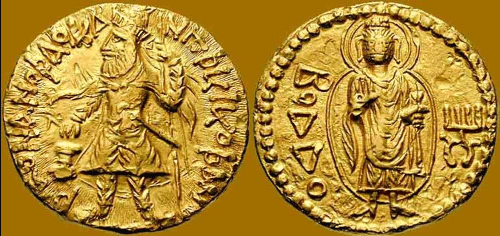 Gold coin of Kanishka I, with a depiction of the Buddha, with the legend "Boddo" in Greek Script
Gold coin of Kanishka I, with a depiction of the Buddha, with the legend "Boddo" in Greek Script
(c) Inscriptions: Inscriptions are more and better evidence than coins. Any script written on a hard surface is called an inscription and their study is called epigraphy. Inscriptions were carved on seals, stone pillars, rocks, copper plates, temple walls, and bricks or images. The oldest inscription are found on the seals of Harappa which dates back to 2500 B.C. However, they cannot be deciphered as it was written in a pictographic script in which ideas and objects were expressed in the form of pictures. The oldest inscription deciphered so far was issued by Ashoka in 3rd century B.C. written in Brahmi script which was written from left to right. Inscriptions are of many types which can be of administrative, political, religious, or social use. For example, Ashokan inscriptions mostly were regarding royal orders and decisions regarding political, social and religious matters. Other inscriptions such as recording land grants made by princes are used to understand the land system and administration of that particular period.
(d) Monuments/Sculptures: Monuments and sculptures can be used as a remembrance of a person or event which has become part of the cultural heritage.
5 Famous Sculptures in India:
(i) The Pillars of Ashoka, also known as the Ashoka Pillars, are a series of columns scattered across India
(ii) Sanchi Stupa
(iii) Ajanta Caves
(iv) Kailasa Temple
(v) Dancing Girl of Mohenjo-Daro etc.,
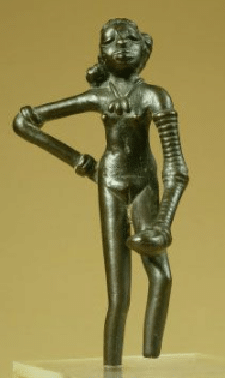 Dancing Girl, Mohenjodaro
Dancing Girl, Mohenjodaro
5 Famous Monuments in India:
(i) The Taj Mahal
(ii) Red Fort
(iii) Qutub Minar
(iv) Mahabalipuram
(v) Konark Sun temple etc.
Sources of History:
- Religious Literature: The ancient Indians knew writing as early as 2500 B.C. which are mainly religious themes. It includes the Vedas, the Ramayana the Mahabharata, and the Puranas, etc., Though they explain the way of social and cultural life during those times, but it is difficult to make use of them in the context of time and space. The literature during the Vedic periods such as the Vedas and the Upanishads deal with rituals, prayers, and philosophy. To understand Vedic literature one needs to learn Vedangas. Ancient Literature is the extension of history. It is nothing but a hypothesis.
The works of Kalidasa such as Abhijnanashakuntalam provide glimpses of the social and cultural life of northern and central India during the Gupta age. - Secular Literature: The word “secular” generally refers to worldly than spiritual. In ancient India, there were many kinds of literature that were non-religious literature. The law books of ancient India known as 'Dharmasutras' and 'Smritis' belong to this group. These literary books were known as secular literature. These books had a code of duties for kings, administrators, and people. They also had rules regarding property and prescribed punishments for murder, theft, and other crimes. Kautilya's (Popularly known as Chanakya) 'Arthashastra' is the best example of secular literature. 'Indica', written by Megasthenes is one more example of this type of work.
Panini and Patanjali, though they had written in Sanskrit Grammar, also described some political events, are also good examples of secular literature. - Foreign accounts: The literary texts of foreign travellers and historians help us fill the gaps found in our texts and the view of an outsider of our culture, society, administration, etc.
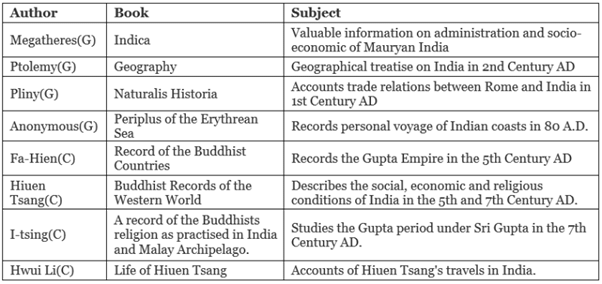
Civilizations Around the World
- A civilization is a complex human society that may have certain characteristics of cultural and technological development.
- The word “civilization” is from the Latin word “civitas” meaning city.
- In many parts of the world, early civilizations formed when people began coming together in urban settlements.
- Civilizations are further defined by socio-politico-economic characteristics such as centralization, the domestication of animals, specialization of labour, culturally ingrained ideologies of progress, monumental architecture, taxation, societal dependence upon farming, etc.
- The earliest emergence of civilizations is generally associated with the final stages of the Neolithic Revolution, culminating in the relatively rapid process of urban revolution and state formation, a political development associated with the rise of the governing elite. This coincides with the late Chalcolithic and Early Bronze Ages.
- The first civilizations emerged in the Fertile Crescent, which consists of the Mesopotamian and Egyptian civilizations, the Indus Valley civilization, the Chinese civilization and though much later the independent civilizations of Mesoamerica and Andes.
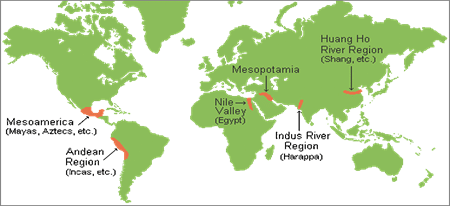 Ancient Civilizations of the World
Ancient Civilizations of the World
- Mesopotamian Civilization: Also known as the Sumerian civilization. It evolved in the basin of the rivers Euphrates and Tigris in the modern-day countries of Iraq and Syria.
- Egyptian civilization: It is one of the oldest civilizations along with the Mesopotamian civilization. It was based around the Nile River valley and the Nile Delta in the modern country of Egypt.
- Indus Valley Civilization: It is also popularly called the Harappan civilization after one of the first sites discovered. It grew around the valleys of the Indus River and its major tributaries. It had the largest geographical extent of any ancient civilization. It is also called the Bronze age civilization as bronze was used abundantly.
- Chinese civilization: It emerged in Northern China around the Hwang Ho river basin.
- Mesoamerican Civilization: This developed in Central Mexico and nearby regions on a much later date as compared to the Old-World civilizations.
- Andean Civilization: Similar to the Mesoamerican civilization, this also grew independently on the slopes of the Peruvian Andes and the Pacific coastal valleys downhill.
Discovery of IVC
 Mohenjo-daro
Mohenjo-daro
In 1853, Alexander Cunningham- the Director-general of the Archaeological Survey of India (ASI) visited Harappa. It was then thought to be a long-lost Buddhist city.
 Alexander Cunningham
Alexander Cunningham
In the 1920s, under the leadership of the then ASI head, John Marshall excavations had begun in the Indus valley region. In 1921, Harappa was excavated by Daya Ram Sahni, and in 1922; Mohen-jo-daro was excavated by R. D. Banerji.
In 1924, John Marshall announced the discovery of a new ancient civilization to the world. He coined the term ‘Indus Civilization’.
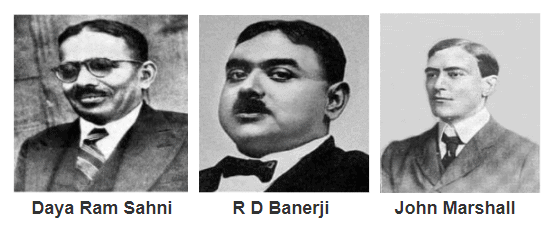
In the next few decades, extensive digging and surveys revealed a large number of ancient settlements such as Chanhudaro, Lothal, Kalibangan, etc.
➤ Timeline of IVC
Three phases of IVC are
(i) The Early Harappan Phase from 3300 to 2600 BCE
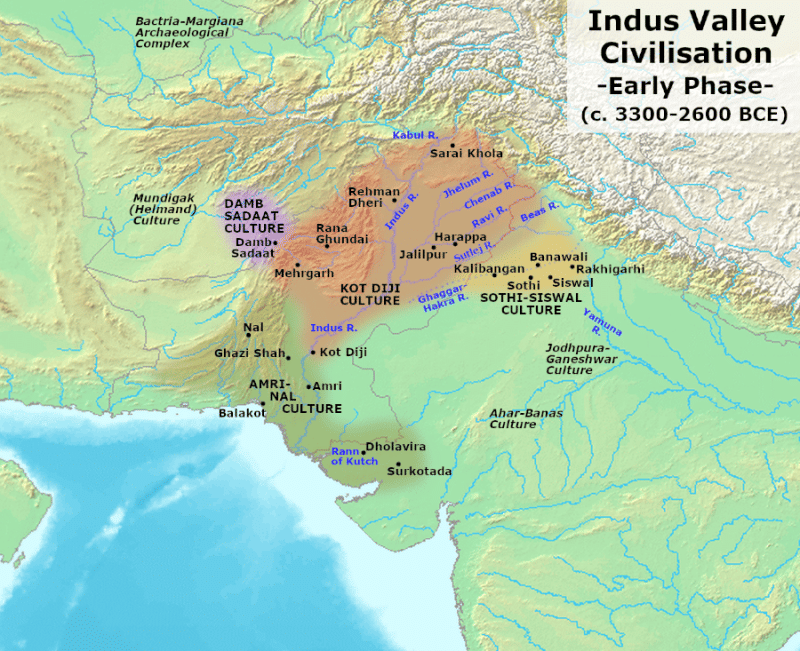
- The Early Harappan Phase is related to the Hakra Phase, identified in the Ghaggar-Hakra River Valley.
- The earliest examples of the Indus script date back to 3000 BC.
- This phase stands characterized by a centralized authority and increasingly urban quality of life.
- Trade networks had been established and there is also evidence of the cultivation of crops. Peas, sesame seeds, dates, cotton, etc, were grown during that time.
- Kot Diji represents the phase leading up to the Mature Harappan Phase.
(ii) The Mature Harappan Phase from 2600 to 1900 BCE
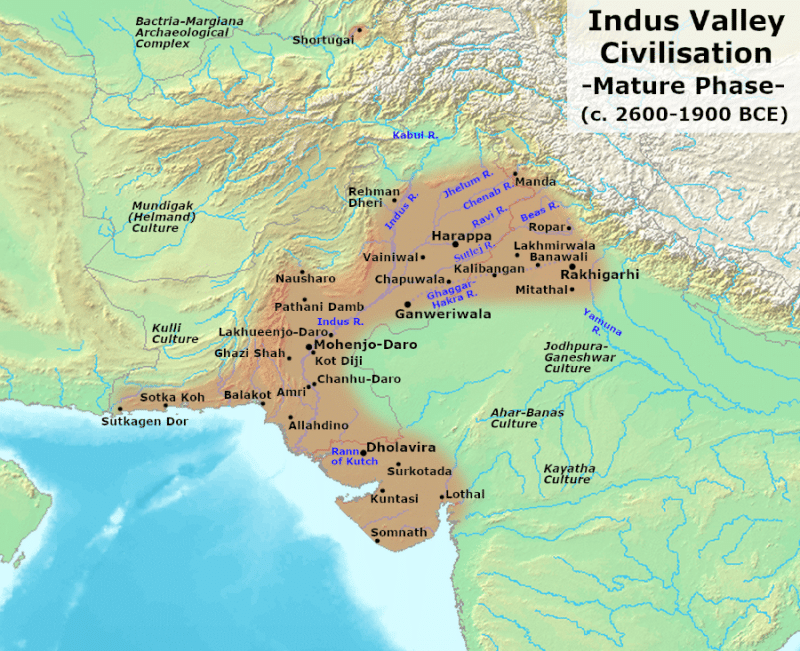
- By 2600 BC, the Indus Valley Civilization had entered a mature stage.
- The early Harappan communities were turned into large urban centres, like Harappa and Mohenjodaro in Pakistan and Lothal in India.
(iii) The Late Harappan Phase from 1900 to 1300 BCE.
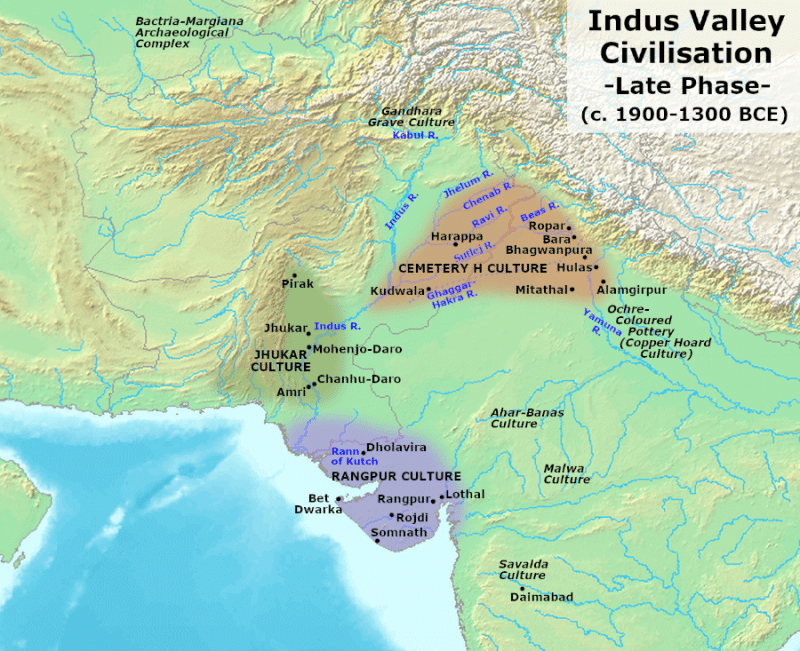
- The signs of a gradual decline of the Indus River Valley Civilization are believed to have started around 1800 BC and by 1700 BC, most of the cities were abandoned.
- However, one can see the various elements of the Ancient Indus Valley Civilization in later cultures.
- Archaeological data indicates the persistence of the Late Harappan culture till 1000-900 BC.
|
216 videos|853 docs|219 tests
|
FAQs on History & Discovery: Indus Valley Civilization - History for UPSC CSE
| 1. What is the Indus Valley Civilization and where was it located? |  |
| 2. What were the major cities of the Indus Valley Civilization? |  |
| 3. What were the main features of the Indus Valley cities? |  |
| 4. What is known about the economy of the Indus Valley Civilization? |  |
| 5. What led to the decline of the Indus Valley Civilization? |  |






















